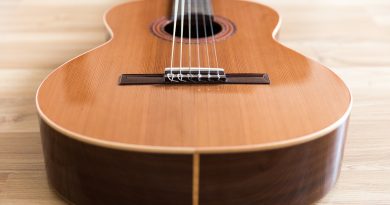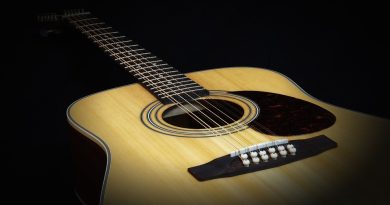Unlock New Sounds: A Guide to Alternate Guitar Tunings
Unlock New Sounds: A Guide to Alternate Guitar Tunings
As a guitarist, one of the most exciting ways to expand your musical palette is by exploring alternate guitar tunings. By changing the standard tuning of your guitar, you can unlock new sounds, textures, and possibilities that can inspire creativity and enhance your playing. In this guide, we will explore some of the most popular alternate guitar tunings and provide tips on how to incorporate them into your playing.
Why Use Alternate Guitar Tunings?
Alternate guitar tunings offer a unique way to explore different tonalities and create fresh, innovative sounds. By changing the pitch of the strings, you can achieve chords and intervals that are not possible in standard tuning. This can lead to new melodic and harmonic possibilities, as well as open up new rhythmic patterns and textures.
Many guitarists use alternate tunings to overcome technical limitations, such as playing complex chord voicings or achieving certain intervals. Additionally, alternate tunings can provide inspiration for songwriting and improvisation, as they can spark new ideas and approaches to playing the guitar.
Types of Alternate Guitar Tunings
There are countless alternate guitar tunings that you can experiment with, but some of the most popular ones include:
1. Open Tunings: Open tunings are tunings in which the strings are tuned to form a chord, such as Open G (DGDGBD) or Open D (DADF#AD). These tunings are commonly used in slide guitar playing and can create a rich, resonant sound.
2. Drop Tunings: Drop tunings involve lowering the pitch of one or more strings, such as Drop D (DADGBE) or Drop C (CGCFAD). These tunings are popular in heavy metal and rock music, as they provide a heavier, more aggressive tone.
3. DADGAD Tuning: DADGAD tuning is a popular alternate tuning used in folk, Celtic, and fingerstyle guitar playing. This tuning creates a beautiful, open sound and allows for the exploration of unique chord voicings and harmonies.
4. Open D Minor Tuning: Open D Minor tuning (DADFAD) is a haunting, melancholic tuning that is perfect for creating atmospheric, moody music. This tuning is popular in singer-songwriter and acoustic guitar playing.
Incorporating Alternate Guitar Tunings into Your Playing
Once you have familiarized yourself with some alternate guitar tunings, the next step is to incorporate them into your playing. Here are some tips on how to do so effectively:
1. Experiment: Take the time to experiment with different alternate tunings and explore the unique sounds and textures that each tuning offers. Try playing scales, chords, and melodies in each tuning to get a feel for how it can be used in your playing.
2. Transpose Chord Shapes: If you are familiar with chord shapes in standard tuning, try transposing them to different alternate tunings. This can help you discover new chord voicings and inversions that may inspire your playing.
3. Play with Open Strings: Alternate tunings often involve open strings, which can be used to create drones, pedal tones, and ringing harmonics. Experiment with playing open strings in combination with fretted notes to create rich, resonant textures.
4. Listen to Others: Study the playing of guitarists who use alternate tunings, such as Joni Mitchell, Nick Drake, or Michael Hedges. Pay attention to how they use alternate tunings to create unique sounds and incorporate some of their techniques into your own playing.
5. Write Music: Use alternate tunings as a source of inspiration for songwriting and composition. Experiment with different tunings to spark new ideas and approaches to writing music.
Conclusion
Alternate guitar tunings offer a world of possibilities for the adventurous guitarist. By exploring different tunings and incorporating them into your playing, you can unlock new sounds, textures, and creative avenues that can enhance your musicality and inspire your playing. Whether you are looking to expand your repertoire, overcome technical limitations, or simply explore new sonic territories, alternate guitar tunings provide a unique and exciting way to push the boundaries of your playing. So grab your guitar, tune up, and start experimenting with alternate tunings today!






